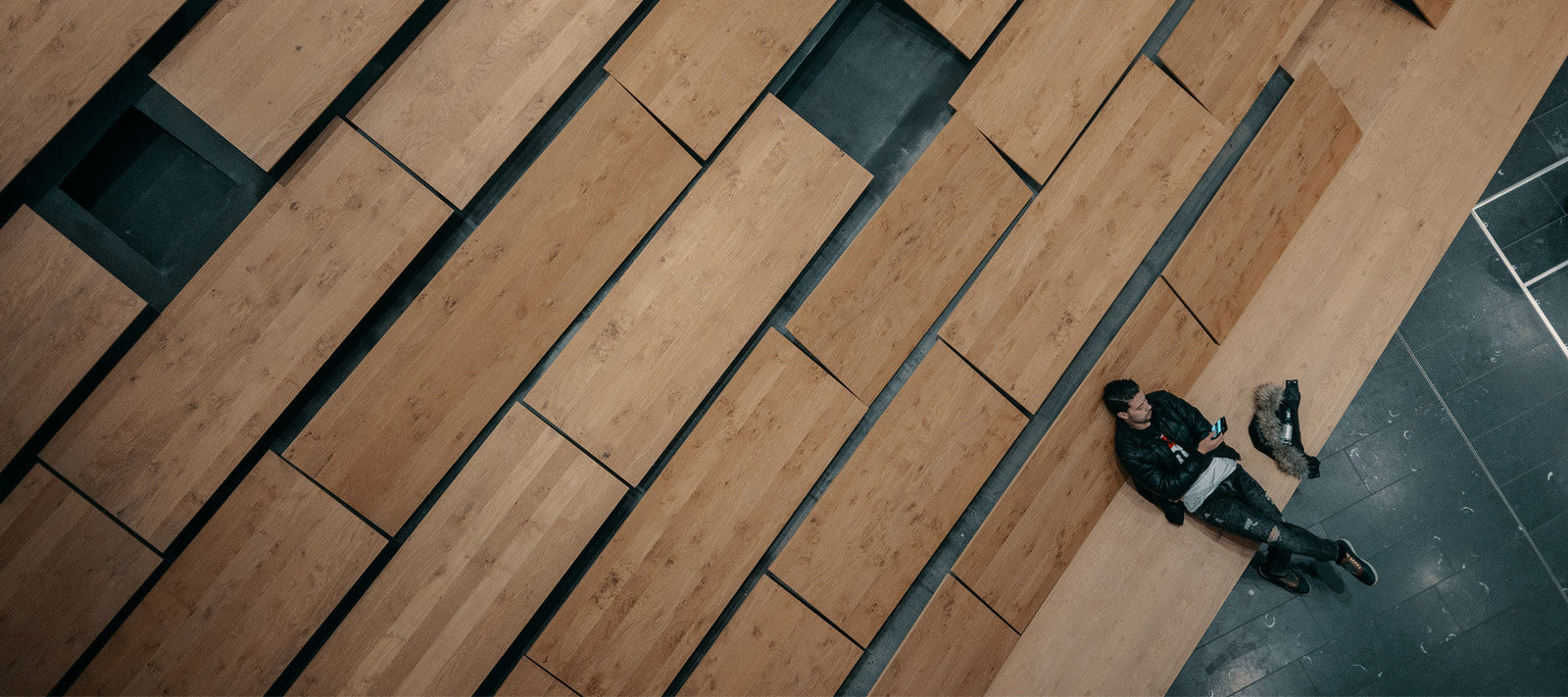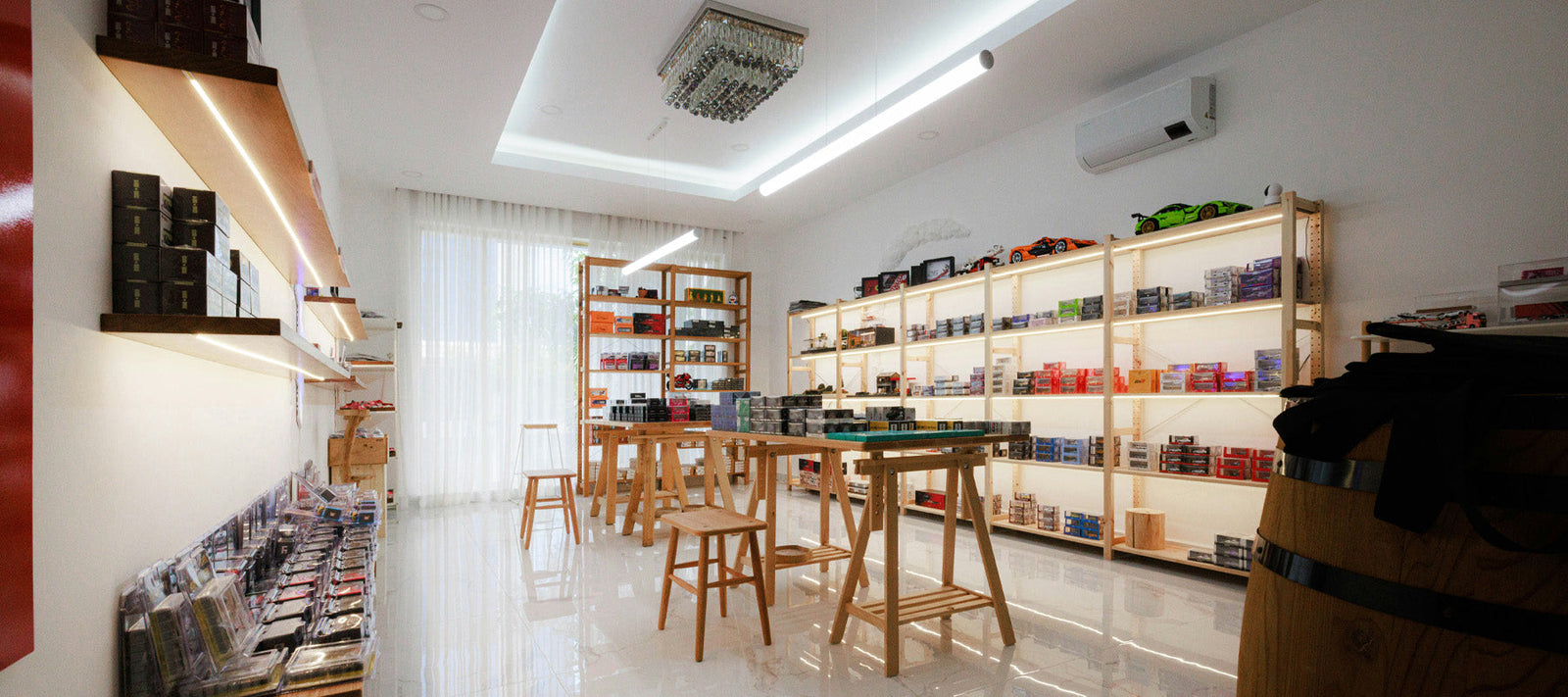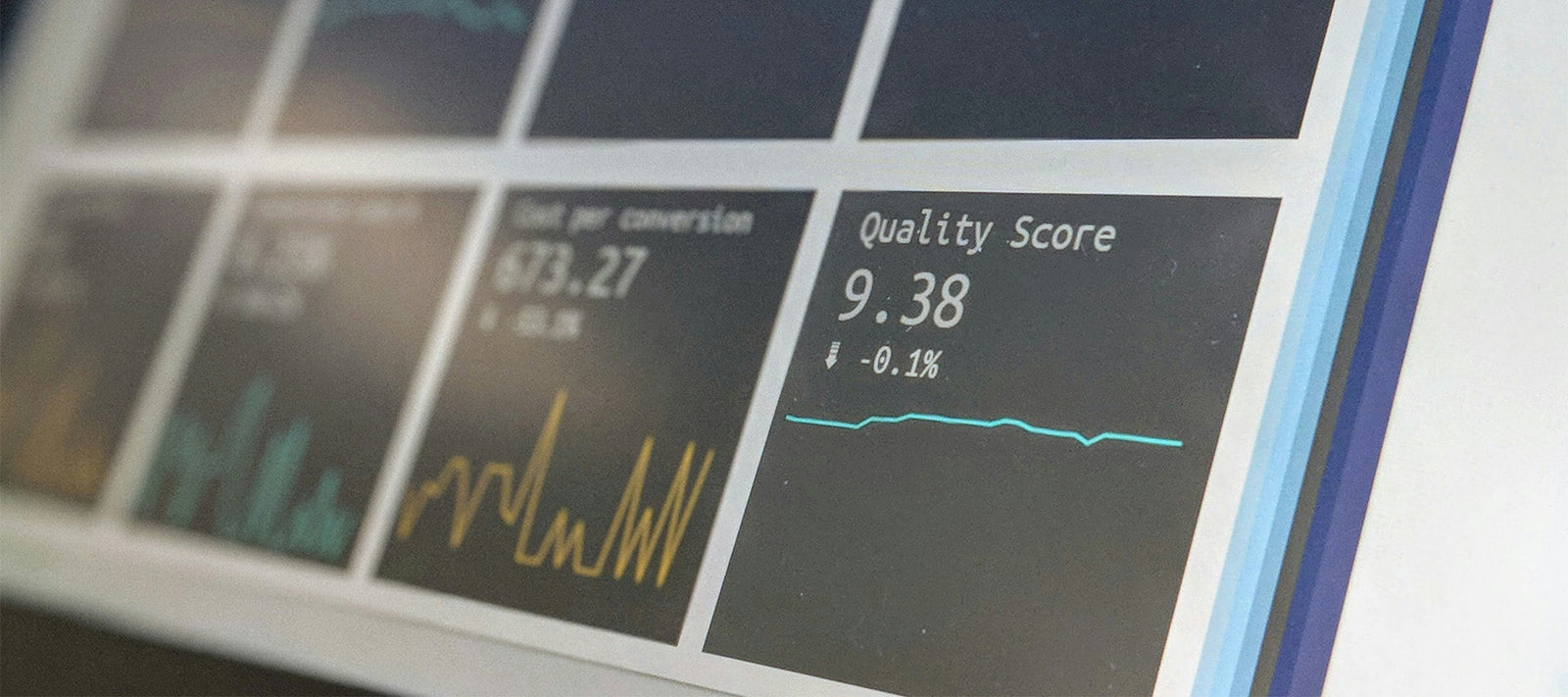In the fast-evolving world of retail, Point of Sale (POS) displays are playing an increasingly pivotal role in how brands capture consumer attention and drive in-store sales. Across Australia, retailers are embracing innovative materials and cutting-edge technologies to create dynamic, eye-catching displays that not only showcase products but also tell a brand’s story. This comprehensive guide explores the latest materials and technologies revolutionising Australian POS display design and how these innovations are transforming the retail landscape.
Table of Contents
1. The Changing Face of Retail in Australia
Retail in Australia is undergoing a dramatic transformation. With the growth of digital commerce and heightened consumer expectations, traditional static displays are no longer enough to capture the modern shopper’s interest. Today’s retail environment demands interactive, engaging, and sustainable POS displays that seamlessly blend physical presence with digital innovation.
Australian retailers are now exploring innovative materials and advanced technologies that not only enhance visual appeal but also improve functionality and sustainability. From the bustling city streets of Sydney to regional shopping centres across the country, brands are investing in next-generation displays that reflect the unique Australian market—one that values quality, sustainability, and local design ingenuity.
2. Innovative Materials Transforming POS Displays
One of the most exciting developments in POS display design is the use of innovative materials. These materials offer enhanced durability, flexibility, and sustainability, making them ideal for the dynamic needs of modern retail environments.
Sustainable and Eco-Friendly Materials
Sustainability is at the forefront of retail design, and Australian brands are increasingly prioritising eco-friendly materials in their POS displays. Consumers are more environmentally aware than ever, and they expect brands to reflect this commitment.
-
Recycled Cardboard and Corrugated Board: These materials are popular for their versatility, cost-effectiveness, and recyclability. Modern recycled cardboard can be engineered to be robust enough for high-traffic retail environments while remaining lightweight.
-
Biodegradable Plastics: Advances in biodegradable polymers are enabling designers to create displays that offer the benefits of traditional plastics—such as durability and a sleek finish—without the long-term environmental impact.
-
Sustainable Wood Alternatives: Bamboo and reclaimed wood are increasingly used for premium displays. These materials not only add a natural, high-end look but also align with eco-friendly practices.
Embracing sustainable materials not only reduces environmental impact but also resonates with eco-conscious Australian consumers, strengthening brand loyalty and corporate reputation.
Advanced Composites and Recycled Materials
Beyond traditional eco-friendly options, the latest composites are setting new benchmarks in strength, durability, and aesthetics.
-
Lightweight Composites: Advanced composites offer a blend of strength and lightness, enabling large-scale displays that are easier to transport and install. These materials are particularly beneficial for pop-up events and modular installations.
-
Recycled Aluminium and Metal Alloys: Metal-based displays using recycled aluminium provide a modern, industrial look while reducing energy consumption during production. These materials are highly durable and offer a premium finish that elevates the brand’s visual identity.
-
Innovative Fabric Blends: Textiles and fabrics with a high percentage of recycled content are being used for soft signage and banner displays. These fabrics can be printed with vibrant graphics and are designed to withstand the rigours of the retail environment.
Customisable and Modular Solutions
Flexibility is key in today’s retail market, and customisable, modular display systems are gaining traction.
-
Modular Components: Designed to be reconfigured and adapted to different product ranges or seasonal campaigns, modular displays offer retailers the flexibility to update their setups without a complete overhaul.
-
3D Printed Elements: 3D printing technology allows for bespoke components that can be easily integrated into larger displays. This innovation enables rapid prototyping and customisation, ensuring that each display is uniquely tailored to the brand’s needs.
-
Hybrid Materials: Combining different materials—such as recycled plastics with aluminium accents—can create striking visual contrasts while leveraging the strengths of each component.
By utilising customisable and modular materials, Australian retailers can quickly adapt to market changes and create displays that are both innovative and cost-effective.
3. Cutting-Edge Technologies in POS Displays
While innovative materials form the physical backbone of modern POS displays, advanced technologies are what truly revolutionise the retail experience. The integration of digital and interactive elements is enabling a level of engagement that traditional displays simply cannot match.
Digital Signage and Interactive Screens
Digital signage is rapidly becoming a standard in retail environments. These high-definition displays offer dynamic content that can be updated in real time, allowing retailers to showcase promotions, product information, and multimedia content seamlessly.
-
High-Resolution Touchscreens: Interactive touchscreens allow customers to explore products in greater detail, access personalised recommendations, or even complete a purchase directly from the display.
-
Content Management Systems: Modern digital signage comes with robust content management systems that enable remote updates and scheduling. This allows for agile marketing campaigns that respond to real-time data and trends.
-
Video Walls: Large-scale video walls can create immersive brand experiences. These installations are ideal for flagship stores or pop-up events where making a bold visual statement is essential.
Internet of Things (IoT) and Smart Displays
The Internet of Things (IoT) is reshaping retail by connecting physical displays with digital networks, creating a seamless flow of data and interactive content.
-
Sensor-Enabled Displays: IoT sensors can monitor customer interactions, adjust lighting or content based on foot traffic, and even trigger alerts when replenishment is needed.
-
Smart Integration: POS displays integrated with IoT can provide real-time analytics on engagement levels, helping retailers to refine their strategies and improve customer experience.
-
Automated Updates: Smart displays can automatically update promotional content based on inventory levels, time of day, or local events, ensuring that the information presented is always relevant.
Augmented Reality (AR) and Virtual Reality (VR) Integration
AR and VR are the frontiers of immersive retail experiences. They offer customers a way to interact with products and brand narratives in a deeply engaging, multisensory manner.
-
Virtual Try-Ons: AR technology enables customers to virtually try on products—whether it’s clothing, accessories, or cosmetics—directly via an interactive display.
-
Immersive Product Demonstrations: VR experiences can take customers on a virtual tour of a product’s features or even simulate real-world usage scenarios, making complex products easier to understand.
-
Enhanced Storytelling: By overlaying digital content on physical displays, AR can provide additional layers of information, such as product origins, sustainability credentials, or user testimonials, in a visually compelling format.
These technologies are not only enhancing the shopper’s experience but also providing retailers with valuable data on customer behaviour, which can be used to fine-tune marketing strategies.
4. How These Innovations Are Revolutionising Australian Retail
The convergence of innovative materials and advanced technologies is transforming the retail landscape across Australia. Here’s how these developments are making a difference:
-
Increased Engagement: Dynamic, interactive displays capture attention and encourage deeper engagement, leading to longer dwell times and higher conversion rates.
-
Enhanced Customer Experience: By integrating digital elements, retailers can provide a personalised shopping experience that bridges the gap between online and offline channels.
-
Sustainability as a Differentiator: Eco-friendly materials not only reduce environmental impact but also enhance brand image, appealing to Australia’s increasingly sustainability-conscious consumers.
-
Flexibility and Adaptability: Modular, customisable display solutions allow retailers to quickly respond to market trends and seasonal demands, ensuring that their in-store marketing remains fresh and relevant.
-
Data-Driven Decisions: IoT-enabled smart displays deliver real-time analytics, empowering retailers to make informed decisions that drive efficiency and boost sales.
These innovations are empowering Australian retailers to create retail environments that are not only visually stunning but also strategically aligned with modern consumer expectations.
5. Case Studies: Australian Success Stories in POS Display Innovation
Case Study 1: A Leading Fashion Retailer in Sydney
A major fashion retailer in Sydney adopted a hybrid approach by combining recycled materials with state-of-the-art digital signage. Their POS displays featured interactive touchscreens that allowed customers to explore the latest collections, view styling tips, and even virtually try on outfits using AR technology. The result? A marked increase in both customer engagement and sales, as well as positive social media buzz around the innovative in-store experience.
Case Study 2: A Regional Lifestyle Brand
A lifestyle brand operating in regional Australia invested in modular, eco-friendly POS displays constructed from recycled cardboard and biodegradable plastics. The displays were designed to be reconfigured easily for different product launches and seasonal promotions. By integrating IoT sensors, the brand was able to gather real-time data on customer interactions, enabling them to tailor future campaigns more effectively. This strategy not only boosted sales but also enhanced the brand’s reputation for sustainability.
Case Study 3: A High-Tech Electronics Store
An electronics retailer known for its cutting-edge products installed large-scale video walls and smart displays in its flagship store. These displays integrated live social media feeds and personalised product recommendations based on customer data collected via IoT sensors. The interactive experience led to longer customer dwell times and a significant uplift in conversion rates, demonstrating the powerful synergy of advanced materials and digital technology.
6. Best Practices for Implementing Advanced POS Displays
For retailers looking to capitalise on the latest innovations in POS display design, here are some best practices to consider:
-
Plan for Integration: Ensure that the chosen materials and technologies work seamlessly together. Collaborate with experts in both design and technology to create a cohesive solution.
-
Focus on Sustainability: Incorporate eco-friendly materials not just as a trend, but as a core part of your brand’s identity. Sustainability can be a significant differentiator in the Australian market.
-
Embrace Modularity: Use modular and customisable components that allow for easy updates and reconfigurations. This flexibility helps maintain freshness and relevance.
-
Invest in Training: Equip your staff with the knowledge to manage and utilise advanced POS displays effectively, ensuring they can assist customers and maintain the technology.
-
Utilise Data Analytics: Leverage the data collected by smart displays to continuously refine your marketing strategy. Monitor KPIs such as customer engagement, dwell time, and sales conversion rates.
7. Future Trends and What Lies Ahead
The future of retail POS displays in Australia is bright and full of promise. Here are some emerging trends to watch:
-
Increased Use of AI: Artificial intelligence will further personalise the in-store experience, from customised content displays to predictive maintenance of POS hardware.
-
Greater AR/VR Integration: As AR and VR technologies become more accessible, we can expect even more immersive and interactive retail displays.
-
Enhanced Connectivity: With 5G and next-generation IoT, the speed and reliability of digital signage and smart displays will continue to improve.
-
Focus on Localisation: Tailoring display content to regional and local consumer trends will become increasingly important, helping retailers better connect with Australian shoppers.
-
Sustainable Innovation: Advances in sustainable materials and eco-friendly manufacturing processes will push the boundaries of what’s possible, combining high performance with a reduced environmental footprint.
8. Conclusion: Embracing the Future of Retail Displays
The revolution in POS display design is well underway in Australia. By harnessing innovative materials and advanced technologies, retailers can create in-store experiences that are engaging, sustainable, and highly effective at driving sales. From interactive digital signage to modular, eco-friendly displays, the future of retail is being redefined by innovation and a commitment to meeting modern consumer expectations.
As you plan your next retail campaign or update your in-store marketing strategy, consider how these cutting-edge solutions can elevate your brand. Whether you’re a high-end fashion retailer, a tech-savvy electronics store, or a regional lifestyle brand, the integration of advanced materials and technologies in your POS displays offers a powerful way to differentiate your business in a competitive market.
Take Action Today:
-
Explore New Materials: Investigate the latest eco-friendly and advanced composites available for POS displays.
-
Embrace Digital Innovation: Invest in interactive, IoT-enabled displays that can deliver real-time content and data.
-
Collaborate with Experts: Work with experienced designers and technologists to develop customised solutions that meet your specific needs.
-
Monitor Performance: Use data analytics to assess the impact of your displays and refine your strategy over time.
By staying ahead of the curve and adopting these innovations, your business can not only capture the attention of today’s digital-savvy consumers but also set the stage for long-term retail success. The future of Australian retail displays is dynamic and exciting—embrace the change and watch your in-store performance soar.
In conclusion, revolutionising retail through the latest materials and technologies in Australian POS displays is not merely an option—it’s a necessity in today’s competitive market. By integrating sustainable materials, digital innovations, and data-driven insights, retailers can create immersive, interactive experiences that resonate with consumers and drive measurable results.
Share this guide with your retail teams, design partners, and industry peers to inspire a new wave of innovation in your POS display strategies. Stay tuned for more insights on how cutting-edge technology and innovative materials can transform your retail space into a dynamic, future-proof environment.
For further consultation on implementing these advanced solutions in your store, get in touch with our team of experts and discover how we can help you revolutionise your retail displays for maximum impact in the Australian market.






